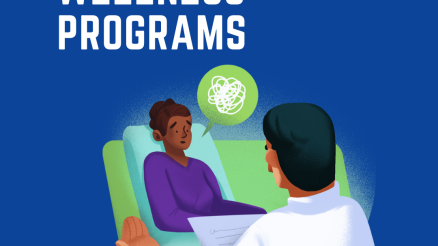Did you ever experience change at your workplace? Did it cause fear of unknown and uncertainty which lead to discomfort, anxiety and even depression? How did you cope with this situation?
Change is now very common at workplace. Gone are the days when you start a job with an organization and stay there till your retirement. Organizations are going through rapid changes due to external and internal factors.
When organizations pursue change they may need to radically revise its business strategy, reorganize its structure and modify its operations. And why all of this is not easy especially for employees because its outcome or result is not clear. So the fear of unknown is intimidating.
But change is not always bad, it is beneficial if it is properly managed. It offers new opportunities, growth and prosperity to both organization and employee. From employee’s perspective, there are many proven ways and techniques to handle pressure of change at workplace and organizations.
Some of the most powerful ways to deal with change at workplace are discussed below:
Step 1. Control Negative Emotions
Change at workplace often comes with a package of negative emotions. It may be a big shock for you when you hear about change. It may produce anxiety about your role in the future. You may get angry as you feel helpless to avert new situation. These all emotions have a negative effect on your work and personality and these are not going to help you out in tough situation like change at workplace.
Employees are usually unaware about their emotional feelings. You need to consciously identify negative emotion when it hits you in the first place. In this situation you need to always ask yourself one question “Does this (emotion) help to reverse the situation?” Obviously, the answer is “no”. You can control your emotions by sharing your thoughts with friends, engaging yourself in healthy activities like exercise, distancing yourself from useless debates and argument. Managing negative emotions demands continuous effort and you can master this art with practice.
Step 2. Focus on your Values
You should keep your focus on your values in the turbulent time of change. In this article of Harvard Business Review the author explains this point that in order to hold positivity, you should keep reminding yourself of what is most important to you for instance family, faith etc.
And when it comes to work then your values may be like integrity or creativity, these are most important characteristics of your personality. You should not compromise your professional values. Do stick to these in challenging times because these help you ward off every hurdle comes your way.
Step 3. Accept Change
The next step to deal with change is to accept change. Living in denial is not going to work for you. The sooner you accept change, the better you will be able to adopt it. Accepting change will make you stronger and much prepared to cope with the pressure of taking up new role and learning skills to undertake new role.
Taking positive perspective of change is always helpful in accepting change. Change is not always bad. And you never know that it can be more rewarding to you. It is hard at the beginning as you have to learn new things, upgrade your skills and knowledge but it may be more satisfying to you at the end.
Step 4. Become Champion of Change
As it is said “if you can’t beat them then join them”. This proverb holds true as far as organizational change is concerned. When organization is going through change, there are usually two kinds of employee; some are champions of change and other are against change. If you become champion ofchange, you will be among those who are enthusiastic about change and passionate about trying new things. They believe in learning new skills and applying new knowledge. This attitude pays you off and you will be better off in the the future.
Championing change will give you positive energy to help resolve problems and handle the pressure. In this way change will be less painful. And you will find ways and mean to sail through the difficult time.
Step 5. Learn New Skills
Change demands new knowledge and skills. Organizations seek new human resources who possess required knowledge and skills. And this makes employees uncomfortable that whether they fit in change process. Organizations, at times, seek new human resource with desired experience and skills. However, some organizations do take care of capacity building of their human resource.
In any case, you should asses your own suitability and identify skills which will maximize your chances to stay relevant. Fortunately, there are endless online resources available for your help. You can also also seek professional help from your mentors as well from your peers.
Step 6. Don’t Pursue Perfection
Perfection is a relative term and human being can not be perfect. When organizations are going through change, employees tend to think that they don’t have perfect skills and knowledge. Instead of accepting new challenges and becoming part of change process, they opt out of it and end up reacting negatively to new situation.
This is mistaken thinking and you don’t need to be perfect. However, you must know and accept your limitations but do not underestimate your skills and experience. The sooner you get over the idea of getting perfection, the easier it will be to adjust to new situation. It will help take the pressure off you and give you positive energy to work hard and find your place in changing situation.
Step 7. Communicate as much as you can
Communication is key to deal with process of change. You should be communicating with you peers, colleagues, mentors and supervisor in order to know more about new situation. The more you have understanding about change, the easier it will be for you to adopt to change. You should grab every opportunity to participate in formal and informal meetings and get together where you will be able to discuss about change and get to know what are opportunities and how will you adopt to change.
Asking questions about change will also give positive impression about you. It shows that you have embraced change and now trying to adopt it. It enhances your chances to stay relevant in change process.
Step 8. Discuss Solutions not Problems
The common mistake employees make is that they just focus on their feelings and problems. They share with their peers and co-workers their negative emotions caused by change. Even they indulge into gossips which produce negative energy and they end up losing their focus.
Instead of sharing your problems and negative emotions, you should discuss possible solutions of the problems. The entire perspective will be changed by doing this. And you will be able to find practical ways how to deal with problems, what should be strategy, what are exactly new skills you need to learn etc.
Step 9. Be Flexible
Change demands flexibility. If you show rigidity and do not want to compromise on your current position and role, then you may be at risk of losing your job or position. Being flexible means you have accepted change and you are willing to try new things in this transition phase. This is the wisest approach to deal with change.
If you are flexible, then your chances to stay in organization are higher because you are ready to accept new roles no matter big or small. This attitude will also help in exploring yourself and your potential expertise in other areas. In the long run, you will be able to diversify your experience and skills set.
Step 10. Take Care of Yourself
Last but not the least is to take care of yourself in the time of change. Since change is going to test your patience, nerves and resilience, so you should listen to your body and fight back by taking good care of yourself. All you need is to connect with friends and family, eat a balanced and healthy diet, have a good sleep, do regular exercise and enjoy your hobbies.
Many times employees indulge themselves in habits like smoking and drinking to cope with pressure of change at workplace. These habits can put your health at risk and make the situation worse for you. The only way forward is to install healthy habits to sail through stressful process of change.
Take Home Points
- Organizational change brings rapid and radical shift in structure, business strategy and human resource. And this causes fear, anxiety and stress among employees.
- There are 10 tested and proven ways to deal with change.
- These techniques include: continuously practise to control your negative emotions and keeping your focus on values and work ethics;
- Accepting change and embracing new situation, and joining the team who are excited about change;
- Learning new skills and improving your knowledge, and don’t chasing perfection at the early stages of change;
- Communicating at all levels and asking questions about change, and discussing only solutions instead of talking feelings and problems; and
- Being flexible to opportunities no matter big or small, and taking care of your body and soul.



